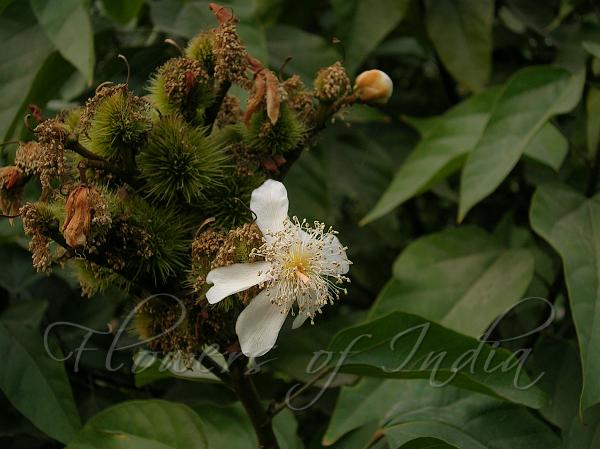|
| Lipstick Tree |
|

|

| File size | 673574 |
| Original date | 12/10/06 2:08 PM |
| Resolution | 2048 x 1536 |
| Flash | Flash did not fire, auto |
| Focal length | 8.0mm |
| Exposure time | 1/382s |
| Aperture | 3.2 |
| Focus Distance | |
| Metering Mode | Partial |
| Camera make | NIKON |
| Camera model | E3700 |
| Sensor type |
|
|
|
Photo: |
Botanical name: Bixa orellana Family: Bixaceae (Annatto family)
This plant stands alone in its family; a profusely fruiting shrub, reaching 6
- 20 feet tall and age up to about 50 years.
Annato has large 5-15 cm long, 4-11 cm wide, pointed leaves. Flowers occur in
vertical upright clusters, which prominently appear above the foliage. Flowers
are showy, white or pink, nearly 5 cm broad, with five petals and a dense mass
of stamens in the center. The petals often tend to curl up. Fruit is 2-valved,
ovoid, red, spiny, 2.5-5 cm long; seeds many, ovate, with a scarlet covering.
Although a native of West Indies, lipstic tree has been cultivated in India
for many centuries for the yellow-orange dye obtained from its seeds, which is
still used as a safe coloring agent for foods.
Approximately 50 seeds grow inside of the pod.
Depending on the color of the flowers, the seedpod is either green or red; the
seeds have the same coating in both.
These seeds are processed to obtain the orange-yellow pigments, bixin and
norbixin (caratenoids), as dye for the food, cosmetic and soap industries.
This dye is used to color the cheddar cheese and is also used for the coloring
of rice. The used part is the dried pulp of the fruit. Lipstick tree is native
to tropical America, but widely cultivated throughout the tropical world,
since long back. Flowering: October-December.
| Identifiction credit: Raj Pal | Photographed in Delhi, Mizoram & Bangalore. |
• Is this flower misidentified? If yes,